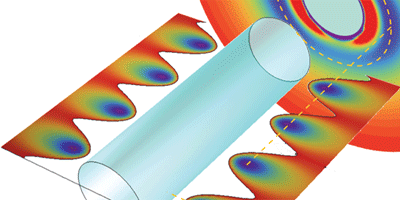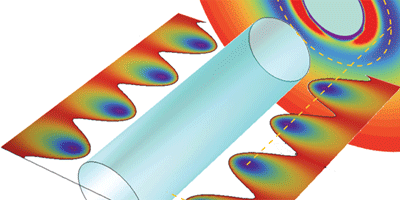Building a Better Atom Trap
There are numerous techniques for trapping individual atoms or atom clouds in isolation, but one current goal is to find ways to trap atoms near structures. These composite systems could be used to make quantum networks that explore physical systems not available in the natural world. In Physical Review Letters, Akihisa Goban, at the California Institute of Technology in Pasadena, and collaborators demonstrate an improved technique for trapping a cesium atom approximately 200 nanometers from the surface of a dielectric nanofiber, in a way that is less disruptive to the atom than previous approaches.
Researchers have trapped cesium atoms near a dielectric nanostructure before, but Goban et al. enhance existing trapping schemes by two techniques. First, the laser fields that form the atom trap are all operated at so-called “magic frequencies” that minimize distortions between ground and excited electronic levels for a trapped atom. Second, two pairs of lasers, tuned to frequencies below and above an atomic transition, are configured to reduce differential trapping potentials among the various substates of ground and excited levels. These modifications avoid the light shifts that hindered previous implementations, thereby greatly reducing the inhomogeneous broadening for laser spectroscopy of the trapped atoms.
Goban et al.’s work brings various applications into the realm of possibility, including the creation of D atomic mirrors for cavity QED, investigations of single-photon nonlinearities, and quantum many-body physics in D spin chains. Additionally, the scheme might enable precision measurements of Casimir-Polder forces near dielectric surfaces. The trapping method can also be extended from trapping atoms near simple nanofibers to doing so near complex photonic crystal structures. – Daniel Ucko





